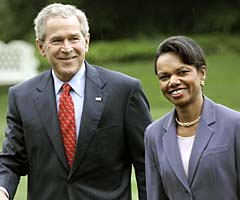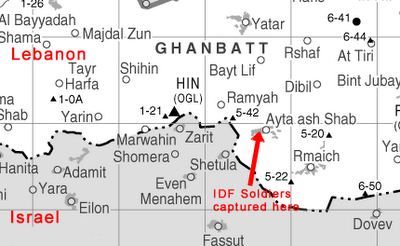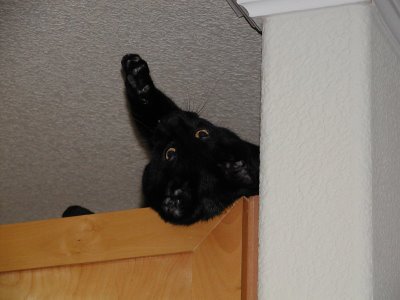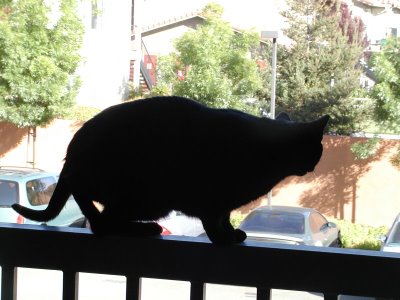A commenter says below:
"What's especially interesting is how the American revolutionaries defeated the British in the 1770s. One of the most important aspects of that is that the Americans didn't fight "fair" according to British standards. They didn't line up in opposing lines and mow each other down with musket fire. Those dastardly Americans would camoflage themselves and hide behind trees, rock walls, and hills, and snipe away at the British."
Unfortunately, said commenter is basically repeating propaganda. The fact of the matter is that both Colonial and British forces used a variety of tactics to conduct their war, and skirmishing tactics such as used above were common on both sides of the aisle. The only halfway-effective guerilla warfare during the conflict occurred in the Carolinas when Colonel Francis Marion of the South Carolina militia used guerilla tactics to disrupt enemy communications, capture supplies, and free prisoners. However, he did not use those tactics in any attempt to stop Cornwallis's march. It would have been suicide.
To understand why this is so, you must first understand the limitations of the available weapons of the time. There were basically three types of weapons available:
- Fowling pieces. These were large-bore muzzle-loading shotguns, typically with a large funnel on the tip of the barrel to allow easily pouring the shot into the gun after you'd poured in the powder and wadding. They were fired off via a flintlock mechanism. They required a significant amount of black powder and shot, had a maximum range of perhaps 20 yards, and were not widely regarded as effective military weapons due to those issues.
- Rifles. These were muzzle-loading weapons where the bullet was pounded into the rifled lands via a hammer and a rod. The stereotypical rifle of the period was the "Pennsylvania Flintlock". This was designed as a large-game rifle rather than as a defensive weapon, and thus had several attributes that rendered it useless as anything other than a sniper rifle: it had no bayonet mount, it had an extremely low rate of fire (taking perhaps a full minute to reload between shots), and you could fire it perhaps a maximum of three times before the barrel became so fouled from black powder debris that you had to stop and spend several minutes cleaning the residue out of the barrel before you could resume firing. These limitations mean that it was used solely as a skirmishing weapon, where skirmishers would fire a shot then fall back to the main body of troops. There was only one battle in the American Revolution (Cowpens) where the skirmishers were important to the outcome, and that was mostly by accident and mostly because they appeared apparently out of nowhere and panicked the British into surrendering.
- Muskets. These were smoothbore weapons which could be swiftly loaded with ball ammunition. Downside: They were horribly inaccurate and short-ranged with a maximum effective range of perhaps 50 yards. The only tactics that made sense was to stand in ranks and mass your fire, in hopes that the sheer weight of lead flying at the enemy disrupted their lines before they could be amongst you with their bayonets.
Given the limitations of the weapons available at the time, the most important weapon of any military battle was the bayonet. Your enemy would get perhaps three shots at you in the time it took you to rush him with the bayonet. If you managed to keep a cohesive line, you could then generally throw him over with the force of your rush. The bayonet was also important in holding off calvary. Calvary was fast enough that you'd generally only get one shot at them before they were amongst you with your sabers... but if you held ranks and bristled with bayonets, the horses would shy away and allow your rear ranks to open fire on a now-stationary target.
Needless to say, all of this meant that almost all battles -- whether by the revolutionary army or by the British army -- were fought in conventional format, by soldiers fighting in ranks. The limitations of the weapons available simply made that the most effective way to fight. The notion of the American soldiers "hiding behind trees, rock walls, and hills, and sniping away at the British" applied mostly only to a single battle that was mostly just a skirmish -- Lexington and Concord -- and mostly was applicable only because the British commander in that instance had been overconfident and had sent an under-strength force without its usual company of skirmishers. If the British unit had been at full strength with their usual company of skirmishers, they would have slaughtered the colonials in much the same way they did in New York when the colonials attempted to use the same tactics there against the British landing, by using the hammer vs. anvil approach where the skirmishers fanned out in front of the main van of the force and killed the colonial skirmishers from behind or pinned down the colonial skirmishers until regulars could charge and skewer them with bayonets. All of this was tactics that the British (AND the colonials) had learned during the long war with the French and the Indian allies of the French, and was standard military doctrine regardless of which side you were on.
In the end, the weapons available to you dictate your tactics, and the weapons available during the American Revolution dictated that it would be fought by professional militaries maneuvering in ranks, even within wooded or high-cover areas. It was not until the widespread availability of AK-47 variants, RPG's, etc. that it became truly feasible for a guerilla army using so-called "unfair tactics" to take on an organized army in modern warfare. Civilian weapons simply lack the rate of fire and stopping power to be particularly useful against a 3rd-generation armored force in that sort of war.
-- Badtux the Military Penguin








